 |
Almond Pieces
From a tree with origins in the Middle East, almond nuts are the delicious heart of classic patisserie such as marzipan and French macarons. Alternatively, the raw fruit of the tree can be eaten as a snack, often dipped in salt as in Iran. Almonds are made into nutritious nut butter, gluten-free flour, and dairy-free milk.
|
 |
Anise
This aromatic, flowering herb is originally from South Asia. It has a sweet licorice-like flavour that is similar to fennel. Traditionally, it is used as a breath freshener, digestive aid and mouthwash. This spicy aromatic is also a favourite flavouring in cakes and cookies, candy and cough lozenges, and liqueurs such as absinthe and ouzo. The origin of the spicy English wedding fruitcake may be an anise-flavoured cake that was served after Roman marriage feasts.
|
 |
Apple Pieces
Symbol of love and beauty in Greek mythology, the apple has been eaten since the Stone Age, travelling from its home in Western Asia to tables around the world. More than 7,000 varieties are enjoyed in lunch boxes, baked into homey pies, turned into classic tarte tatins, and used in jams, ciders and vinegars.
|
 |
Often called the “Indian ginseng”, a natural anti-inflammatory, ancient practitioners of the Ayurvedic modality used it to promote the healing of broken bones but is most well known for its restorative benefits. In addition, ashwagandha is also used to enhance sexual potency for both men and women.
|
 |
A Chinese version of Echinacea is used as an immune stimulant and given to people who are run down, frequently sick, and need an immune boost. It is considered a herb to strengthen all body systems for treating illnesses that cause fatigue, and seems to stimulate and increase the immune system.
|
 |
Beetroot
Beetroot is known to many Northern Europeans as a pickle, and as the star ingredient in borscht. Once proclaimed by the Delphic Oracle to be equal in value to silver, it has been credited with having mystical and medicinal qualities that promote a sense of well-being. Victorians planted decorative beetroot plants in formal gardens. Their vivid red juice has been used for hair dye and to produce a wine similar in taste to port.
|
 |
Bergamot
A hybrid of lemon and Seville orange grown in the south of Italy and France, bergamot adds the distinctive aroma to Earl Grey tea. While the fruit of the bergamot is not edible, the peel is used in liqueurs and marmalade. Its oil is used in tea. In skin care products, the oil acts as an antiseptic, and to cool inflammation. It is also an ingredient in almost half of all perfumes.
|
 |
Blackberry Leaves
The fruit of the wild and evergreen British blackberry is a popular ingredient in traditional jams, pies and wine. The leaf has sweetness as well, and may be eaten as a garnish. Ancient Greeks and Native Americans have used the leaves to treat mouth sores, wounds, bites and rashes.
|
 |
Black Cohosh Root
The root of the black cohosh flowering plant has been used by Native Americans for its medicinal qualities and is approved for use in Germany to treat premenstrual and menopausal symptoms.
|
 |
Black Pepper
The flowering vine of the black pepper was first grown in Southeast Asia. Its dried fruit, the peppercorn, has been used as a seasoning, as medicine and as currency. At one time the worlds’ most traded spice, peppercorns were greatly prized by the ancient Greeks and Romans. Later, it was the 15th century Portuguese who launched the age of discovery, looking for a sea route to the east and a steady source of black pepper.
|
 |
Black tea is perhaps the style of tea most familiar to those who grew up in North America or Europe drinking it with milk and sugar, or honey. Full oxidization browns the leaf and produces a dark coloured infusion with a bright, astringent taste. India and Sri Lanka are the producers of many popular varieties such as Assam, Darjeeling and Ceylon teas, as well as blends such as English Breakfast. Tea drinkers are becoming more familiar with the less well-known Chinese black teas, like Keemun and Golden Yunnan.
|
 |
Cacao Bean Pieces
Also called nibs, cacao beans grow on evergreen trees throughout the tropics. The bean is the dried and fermented base from which chocolate is made. Cultivated in Central and South America for more than 3,000 years, it quickly became a prized commodity of the Spanish conquistadors. In Europe, cacao became favourite drink among the nobility and later, the world’s favourite confection. In the Americas it continues to be used for a variety of culinary purposes, including the savoury mole. One pound of chocolate is comprised of about 400 dried beans.
|
 |
Calendula Petals
A member of the daisy family, cheerful gold calendula is a traditional medicinal and culinary herb native to the Mediterranean. The dried petals can be used as a colour substitute for saffron in many recipes (but the taste is rather different) either by grinding the dried petals or steeping them in milk or water. The external application of a calendula rinse can highlight blonde hair. The herb has also traditionally been used as an anti-inflammatory, to help heal wounds and reduce pain.
|
 |
Caramel Pieces
French crème caramel, Canadian caramel apples, British banoffee pie: some of our favourite foods have the rich creamy taste of browned sugar caramel. The hard candy is an 18thcentury American innovation developed for easy transport across vast distances.
|
 |
Cardamom
Part of the ginger family, cardamom is a warm, pungent spice that is native to the Far East. In India, cardamom flavours curries, sweets and chai tea, while in Turkey it is added to coffee. The Vikings brought the spice to Scandinavia where it became a distinctive ingredient in sweet breads and cookies. Cardamom is second only to saffron as the world’s most expensive spice.
|
 |
Carrot Pieces
Carrots were first grown in Central Asia and initially only the seeds and greens were consumed, much in the way dill and parsley (cousins of the carrot) are used now. Today’s familiar orange carrot is a relatively recent invention having first been cultivated in Holland in the 17th century. Colourful carrots are grown widely throughout Asia where deep pink, purple and red varieties are available.
|
 |
Can be useful as a mild sedative, for cramps and upset stomach. From Europe to China, this herb is a popular remedy for bronchitis and diarrhea. Has potential to be a mild antidepressant that may help to relax, ease indigestion and gas, relive bronchitis, help control diarrhea.
|
 |
Cayenne Pepper
(Capsicum frutescens) takes its name from its supposed centre of origin - the Cayenne region of French Guyana. It is now grown largely in India, East Africa, Mexico and the United States, and in most tropical and sub-tropical regions. Cayenne pepper is a finely ground powder prepared from the seeds and pods of various types of chilli. The powder is red or red-brown in color, and may include the ground seeds. Cayenne Pepper that includes the seeds is hotter than that from which seeds have been excluded. It is known for its extremely high heat flavor.
|
 |
Chamomile Flowers
Grown across Europe, the Mediterranean and North Africa, chamomile is an ancient plant long prized for its aromatic and medicinal properties. The name derives from Greek and means “earth apple”. A member of the daisy family, the apple scent made it popular as a medieval stewing herb. Chamomile continues to be enjoyed as a calming tea that can not only be drunk, but used as a rinse to highlight hair.
|
 |
Cinnamon Pieces
Aromatic cinnamon is the inner bark of the Sri Lankan cinnamon tree. The spice was so prized that ancient traders kept its origin a secret – medieval crusaders were told it was harvested in fishing nets on the Nile. Known as quills, the rolled bark is usually ground for culinary use. Cinnamon is a popular ingredient in European and North American baked goods, but it is also delicious in chai tea, hot chocolate and Middle Eastern savoury dishes.
|
 |
Cloves
A pungent but sweet spice, cloves are the dried flower buds of the evergreen Myrtacaeae tree of Indonesia. The value of cloves, along with black pepper and cinnamon, prompted European explorers to seek trading routes to the Far East. Small and nail-like (the word clove is derived from clavus, Latin for nail) they can be used whole, ground into a powder, or distilled into an essential oil for cooking and medicinal use.
|
 |
Coltsfoot
A member of the daisy family, coltsfoot can be infused, prepared as syrup, and made into confectionary, such as the British Coltsfoot Rock Candy. Its leaves were an ingredient in an old English herbal tobacco smoked as a cough remedy.
|
 |
Coriander
Coriander seeds and cilantro leaves are both parts of the same herb that grows across the Mediterranean and Asia. While the leaves are herbaceous and grassy in taste, the seeds are quite different with a citrus flavour that is well tolerated even by those who don’t like cilantro. Coriander can be used to flavour and thicken stews and curries. Rich in antioxidants, it is used in European beer and pickle production as a preservative.
|
 |
Cornflower Petals
Part of the European daisy family, cornflowers grew in grain fields and were regarded as nuisance weeds. Now, the flower is a beautiful and colourful component to potpourri and ornamental gardens alike. In addition, cornflowers are consumed in Lady Grey tea, in herbal tisanes, and atop fresh salads. A mild toner with astringent and antiseptic properties can be distilled from the petals.
|
 |
Cumin
(Cuminum cyminum) is a small delicate annual plant of the parsley family. The cumin seed has a striped pattern of nine ridges and oil canals, and is hairy, brownish in color, and tapered at each end. The cumin seed is often mistaken for the caraway seed, however cumin has a stronger, more pungent and slightly bitter flavour.
|
 |
Curry Powder
Is a mixture of spices of widely varying composition based on South Asian cuisine. In the western world, curry powder mixtures tend to have a fairly standardized taste, though a great variety of spice mixtures are used in Indian cuisine. Most curry powder recipes include coriander, turmeric, cumin, fenugreek, and red pepper in their blends. Depending on the recipe, additional ingredients such as ginger, garlic, fennel seed, caraway, cinnamon, clove, mustard seed, green and black cardamom, nutmeg, long pepper and black pepper may also be included.
|
 |
Is believed by contemporary herbalists to be a diuretic for premenstrual syndrome, menstrual discomforts, swollen feet, high blood pressure, congestive heart failure and weight loss. It comes from the same family as the daisy and marigold.
|
 |
Dried Elderberries
The sambucus or elderberry shrub grows widely throughout Europe. Its flowers and berries are infused into syrups and drinks including tea, elderflower wine, soft drinks and Sambuca liqueur. Rich in antioxidants, it has been used in traditional folk medicine to treat flu and colds.
|
 |
Dried Pear Pieces
The European and Asian varieties of pear trees have been cultivated for thousands of years but likely originated in China. A member of the rose family (along with apples, almonds, strawberries and peaches), pears have been a staple fruit since Roman times when they were eaten raw or stewed with honey. Today, pears are often the first fruit introduced to babies since they are generally non-allergenic.
|
 |
Fennel Seeds
These are the dried seeds of the annual fennel plant, related to the parsley family. It is native to the Mediterranean region, and is also cultivated in India, Australia and South America. The seeds are 4-8 mm (1/8 - 5/16 in) long, thin and curved, with color varying from brown it light green. The flavor and aroma is similar to sweet anise, with licorice notes.
|
 |
Is a favorite Chinese herb used to help suppress the effects of migraine headaches. Feverfew is also known as bachelor’s button but only the leaves are used in tea. Feverfew is a perennial that reaches 3 feet and has lovely daisy like flowers with yellow centers. It can also be grown indoors year round as houseplants.
|
 |
Is known to increase spirituality promoting calmness, serenity and relaxation.
|
 |
Ginger Root
A member of the same family as turmeric and cardamom, pungent ginger root is native to South Asia where it is eaten in curries, pickles and candies. The root can also be infused for aromatic tea, wine and soft drinks. The dried root is often ground into a fine powder and baked into desserts such as Dutch speculaas cookies and Yorkshire Parkin cake. Ginger root is approved to treat nausea, and has traditionally been used to ease muscle spasms, indigestion and inflammation.
|
 |
Ginkgo
Hardy and tenacious, ginkgo is thought to be the oldest variety of tree on earth. The trees were the only living thing to survive the destruction of the Hiroshima explosion. Ginkgo has been cultivated across Asia for thousands of years and the leaf extract is used in traditional Chinese medicine to treat many illnesses. The seeds can be eaten: roasted as a snack, boiled in Thai coconut desserts, or enjoyed in Chinese conjee.
|
 |
Ginseng
The word ginseng means wonder of the world. The dried root has been infused in tea as a North American folk medicine for hundreds of years. Although it is native to Northern Asia and North American, China imports the American variety. It is thought to have many benefits including reducing fatigue and improving concentration.
|
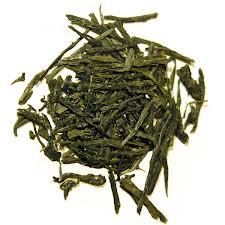 |
Green Tea
Green tea is the most diverse style of tea. There are many methods of processing green tea, including firing in a pan, tumble drying in an oven, or steaming. The result is countless variations in the appearance and taste of the finished tea. The range of shape extends from flat leaves to tightly wound balls, and the colour from bright green to a mossy grey-green. Flavours vary widely from biscuit-like Chinese green teas to grassy Japanese teas.
|
 |
Have been widely used to improve the flow of blood to the heart and to reduce blood pressure. The berries can be used for jellies and jams. Hawthorne increases the action of drugs containing cardiovascular effects, so consult with your doctor if you are currently taking heart medication.
|
 |
Hazelnut Pieces
Also called filberts, hazelnuts are a staple of European patisserie, appearing in tortes, meringues, chocolate truffles, pralines, as well as in Frangelico liqueur. Children enjoy the rich, biscuit-like taste of hazelnut in a popular chocolate breakfast spread. The nut has been harvested on a large scale in Britain for thousands of years: an ancient processing pit unearthed in Scotland dates back 9,000 years.
|
 |
Hibiscus Flowers
Throughout tropical South Asia and the Caribbean, the edible hibiscus flower, rich in vitamin-C, is brewed into a hot sweet tea, and cold drinks such as the Jamaican sorrel wine punch. The bright red flowers have a tangy, citrus-like taste that is also enjoyed in salads and baked goods.
|
 |
According to Herb Mindell's Herb Bible, Kava Kava is known to be nature valium used by oceanic people of the South Pacific for thousands of years. Herbalist here have used it as a remedy for nervousness and insomnia as it can relax without making you feel sluggish.
|
 |
Since ancient times, has been used as a digestive aid, sleep aid, and tranquilizer for people who are anxious, restless, or emotionally troubled. The herb was also considered a remedy for acne, migraines, diabetes and headache. With a reputation as an aphrodisiac that attracted lovers why wouldn’t you want one of our Lavender Epson salt baths?
|
 |
Lemon
The zesty lemon is enjoyed in many cuisines throughout the world. The lemon tree is native to India, but has been cultivated in Europe and the Middle East for thousands of years. The peel, juice and oil of the fruit, as well as the dried flowers and leaves, are valued in traditional medicine for its antibacterial and nutritional properties. In the 18th century the British navy required that sailors be served one ounce of lemon juice daily on long sea voyages to prevent scurvy, a vitamin-C deficiency.
|
 |
Lemon Balm Leaf
Although not related to the citrus fruit, lemon balm leaves have a distinct but gentle lemon flavour and scent. Native to Southern Europe, lemon balm is an herb in the mint family. It is often used along with mint to flavour desserts and teas. Valued by the ancient Greeks for its antiviral properties, lemon balm is approved in Germany to treat anxiety and insomnia.
|
 |
Lemon Myrtle
Lemon Myrtle is an evergreen plant with creamy white flowers from subtropical Australia. The leaves have a prominent lemon taste but no acidity making them an excellent choice to flavour dairy desserts that would otherwise curdle if lemon were introduced. In addition, essential oil distilled from lemon myrtle has antimicrobial properties and is used in skin care and cleaning products.
|
 |
Lemongrass
Grown throughout tropical Asia, lemongrass can be infused to make tea, and to flavour soups, curries and other savoury dishes. In addition, the herb repels mosquitoes and is the essential ingredient in citronella oil. The oil also has preservative qualities and is useful in historical conservation: it is applied to precious palm-leaf manuscripts in India, immediately maintaining the suppleness of the leaves and protecting them from moisture.
|
 |
Lemon Verbena
Lemon Verbena is native to Argentina and Bolivia. The leaves are used in teas, desserts and many savoury foods to add a citrus scent and flavour.
|
 |
Licorice
Licorice is a perennial herb related to the legume family. It flavours candies, liqueurs, soft drinks and tobacco in Europe and the Middle East. The ancient Greek word for licorice, glyrrhiza, means sweet root. The herb’s active ingredient is about forty times sweeter than sugar. It is a traditional remedy to soothe cough and sore throats, and to freshen breath.
|
 |
Linden Flowers
Native to Europe, Linden is also known as Lime Tree or Basswood. The flowers are particularly fragrant in teas, liqueurs and perfumes. Honey from the flowers is especially prized. Due to its anti-inflammatory properties, linden has been used in traditional medicine, and to make skin-care products. Much of the intricate carving in European cathedrals is made of linden wood.
|
 |
Marshmallow
Is the plant that inspired the pillowy white confections toasted over campfires. It comes from the same family as cotton, hollyhock and hibiscus. Early European folk healers used marshmallow root both internally and externally to relieve toothache, sore throat, digestive upset, and urinary irritation.
|
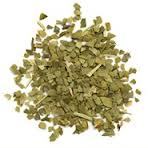 |
Maté Tea
Is a species of holly, the leaves and twigs of the South American plant have been enjoyed throughout South America for hundreds of years and is the national drink of Argentina and Brazil. Yerba Maté has been traditionally brewed in a hollowed out gourd called a cuia or guampa and sipped with a specialized metal straw called a bomba or bombilla. Culturally significant as an energizing social drink, Yerba Maté is often shared at gatherings with family or friends, passing the gourd from person to person, no doubt ensuring lively conversation.
|
|
 |
Has a sweet, fragrant scent. Known as a remedy for flu, fever, and arthritis, and is regarded as an excellent diuretic. Best known for its wild white creamy flowers, which are in blossom from June to September.
|
 |
Since ancient times, the resin and gum of the myrrh plant has been used as an excellent antiseptic, mouthwash and is good for stomach flu. Studies also suggest that it stimulates the body’s immune system, increasing resistance to infection.
|
 |
Nettle Leaves
Nettle is a flowering herb grown throughout the world. Used in traditional medicine as a hayfever remedy, it is now approved for use in Germany to treat some types of inflammation. The word nettle is derived from the old German word for needle, perhaps partly due to its sharp hairs that can sting the skin. In addition, nettle is used in textile production as a substitute for hemp and flax.
|
 |
Oatstraw
Oatstraw is the dried stalk of the oat grass. Grown for thousands of years throughout Europe, it is more often consumed as a cereal, in oatmeal porridge. The straw seems to generally have the same nutrients and benefits as the cereal grain, but in more concentrated form. As a result, infusions of the straw are popular for lowering cholesterol and reducing insomnia.
|
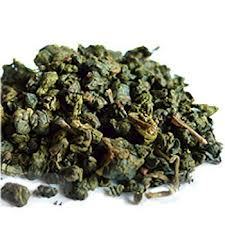 |
Oolong Tea
In recent years oolong has become the choice of many tea enthusiasts because of the depth of complex flavour and aroma this style of processing can produce. In terms of taste, oolongs generally tend to fall between green and black teas because they are only partially oxidized. The particular level of oxidization depends on the desired style of oolong. Finished teas can vary in colour from blue-green to brown. The taste of the infused liquor also varies and may be reminiscent of a green tea or more like a fully-oxidized black tea.
|
 |
Orange
Originally from Asia, and grown on a tropical flowering tree, the orange is considered a modified berry because of its seeds and soft fruit. Juice is the most popular part of the orange with two-thirds of the world’s crop used to produce commercial orange juice. However, the leaves and blossoms, as well as the fruit zest, can be infused and used in baking, and to make tea and perfume.
|
 |
Passion Fruit
Native to South America, the berry-like fruit of the passion flower vine is made into syrup throughout the region. It adds orange flavour to ice creams and shaved ice, soft drinks, mousses and cheesecakes. The fruit is also popular in Australia where it is eaten raw and canned, as a staple much like applesauce. In addition, the edible flowers can be infused in tea, candied or eaten as a garnish.
|
 |
Peppermint Leaves
Originally grown in Europe, peppermint is now cultivated throughout the world. One of many varieties of mint, peppermint is a flowering herb rich in menthol, a compound which produces a cool, anaesthetic quality on the skin and tongue. Menthol is valued for its traditional therapeutic and antiseptic properties including alleviating nausea, muscle pain and toothache, and soothing colds, cough and flu.
|
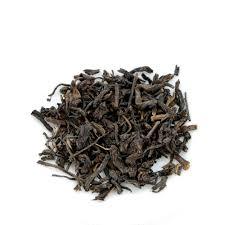 |
Pu'erh Tea
Pu’erh is a fermented Chinese tea that is rich and complex in taste, and pungent in aroma. The tea is pressed into compact cakes and is traditionally allowed to age for many years. In China, the finest cakes may be given as gifts at marriages or on the occasion of the birth of child. Enjoyed in China for hundreds of years to aid digestion, a growing body of research indicates pu’erh may also promote weight-loss and be beneficial in lowering cholesterol.
|
 |
Raspberry Leaves
A member of the rose family, the raspberry bush has been cultivated in Europe for 2,000 years. However, the bush grows naturally wild around the world in diverse climates such as Alaska and Hawaii. The sweet berries are popular in dessert, and are often made into jam, vinegar, wine, liqueur and brandy. Tea made from the raspberry leaf has an astringent flavour similar to that of black tea from the plant camellia senenis tea plant. It has traditionally been used to ease menstrual cramps.
|
 |
Red and Black Dried Currants
Currant fruit bushes grow widely in Northern Europe. The black variety is tart, while the red is sweeter. An alternative to raisins, dried currants are delicious baked into scones and breads. Fresh black currants must be softened and cooked. The resulting jams, jellies and syrups flavour desserts and beverages. Currants became particular popular in Britain during World War II because they were one of the few local sources of vitamin-C. Today, pubs in Britain serve hard cider and beer with the addition of currant syrup.
|
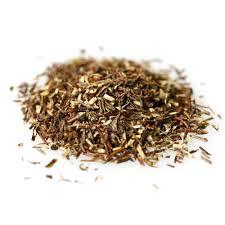 |
Rooibos Tea
Leaves from the South African red bush (rooibos in the Afrikaans language) are brewed into a drink that is consumed very much like tea, either cold or hot, with or without milk and sugar. Rich in vitamin-C, antioxidants and caffeine-free, it may have antispasmodic qualities and other health benefits. The taste is similar to black tea but with a tangy-citrus note. It combines well with other flavours, among them orange and chocolate.
|
 |
Rose Hip
Rosehips are the fruit of the flowering Dog Rose plant. Although the variety is native to Europe, it has also been used by Native Americans for hundreds of years. In earlier years it was popular in desserts and jam. The fruit is very high in vitamins A and C. Tea and syrup made from rosehips has traditionally been used to treat colds and flu, as well as to aid digestion. As an ingredient in skin care products it is thought to aid in fading scars and healing wounds.
|
 |
Rose Petals
Native to Asia, Europe and North America, the perennial rose bush has been cultivated for thousands of years. In addition to their sheer beauty, the petals of the flower have several culinary uses. Petals, either fresh or candied, garnish desserts. Liqueurs are also made from the petals, as are teas and syrups. The syrup can be stirred into ice creams, cheesecakes and mousses. A traditional remedy for sore throat is rose syrup.
|
 |
Safflower Petals
Safflower is flowering herb that looks much like a thistle. It is native to China and India, but is now grown commercially around the world. Vegetable oil derived from safflower seeds is valued for its low smoke-point. In addition, the colourful red, yellow and orange petals are used in textile dye. The petals also add colour and flavour to teas, soft drinks and foods, often as an alternative to the more expensive saffron.
|
 |
In the Middle Ages, sage was used to prevent night sweats. It is also used for stomach cramps and gas and is good for digestion. Known to improve brain nourishment
|
 |
Scullcap
Scullcap is a member of the mint family that is native to North America. Its leaves have been used in traditional medicine for several hundred years to induce sleep, reduce headache and tension, and to promote relaxation.
|
 |
Spearmint Leaves
With less menthol than peppermint, spearmint has a very subtle lemon flavour due to the inclusion of limonene, the chemical component that gives the citrus fruit its taste and aroma. Native to Europe, and like other members of the mint family, it flavours a variety of confections, desserts and beverages, including tea. Its gentle aroma is also popular in perfumes. It has been less widely used than peppermint for medicinal purposes because it is less potent.
|
 |
Sunflower Petals
An annual herb first cultivated in the southern United States about 5,000 years ago, sunflowers are a valuable commercial crop. The sweet quality of sunflower oil is comparable to olive and almond oils. The seeds are rich in nutrients and are roasted to sprinkle on salads and bake into bread. In addition, seeds can be ground into a peanut butter alternative. The bright yellow petals are said to have mystical properties of wisdom and protection, and make a beautiful addition to teas.
|
 |
Tangerine Pieces
A close cousin of the orange, tangerines are sweeter, smaller and have a thinner skin that is more easily peeled. Tangerine fruit and its fragrant zest can be used interchangeably with orange. Like oranges, tangerines are native to China, although today they are grown commercially in the United States and Europe. They are named after the Moroccan port of Tangier from which they were shipped to Europe in the 18th century.
|
 |
A herb made from the root, a hardy perennial flowering plant native to Europe and parts of Asia. Today’s herbalist recommends it for nervousness, anxiety, insomnia, headache, and intestinal cramps. It is known as natural sedative.
|
 |
Vanilla is a plant. The bean (fruit) is commonly used to make flavoring, but it is also used to make medicine. People also use it to increase sexual desire as an aphrodisiac. Vanilla has been used for centuries as an antioxidant and cognitive enhancing agent due to its aromatic stimulant.
|
 |
Has a compound called salicin in which is what aspirin was originally created from salicin that herbalists see as a potent pain reliever. It reaches 75 feel and has rough, grayish brown bark and long, thin leaves on flexible branches, which give the tree a graceful beauty.
|
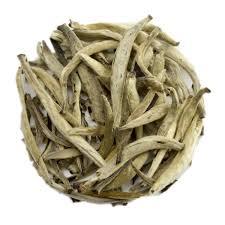 |
White tea uses the buds and youngest, most tender leaves of the camellia senensis plant. It is the least processed class of tea. In comparison to black teas which undergo a complete oxidization process, white tea is merely steamed gently. The aroma and liquor of the infused tea is very light, and ranges in colour from pale yellow to a soft peach. The taste is delicate and often fruity.
|
 teALCHEMY Corporation teas are sourced from companies and estates with excellent track records of social welfare. Our teas have a least one affiliation credit from either Ethical Tea Partnerships or Fair Trade. Quality and freshness are important. When possible we purchase our herbs and medicinal plants locally in Canada.
teALCHEMY Corporation teas are sourced from companies and estates with excellent track records of social welfare. Our teas have a least one affiliation credit from either Ethical Tea Partnerships or Fair Trade. Quality and freshness are important. When possible we purchase our herbs and medicinal plants locally in Canada.











































































